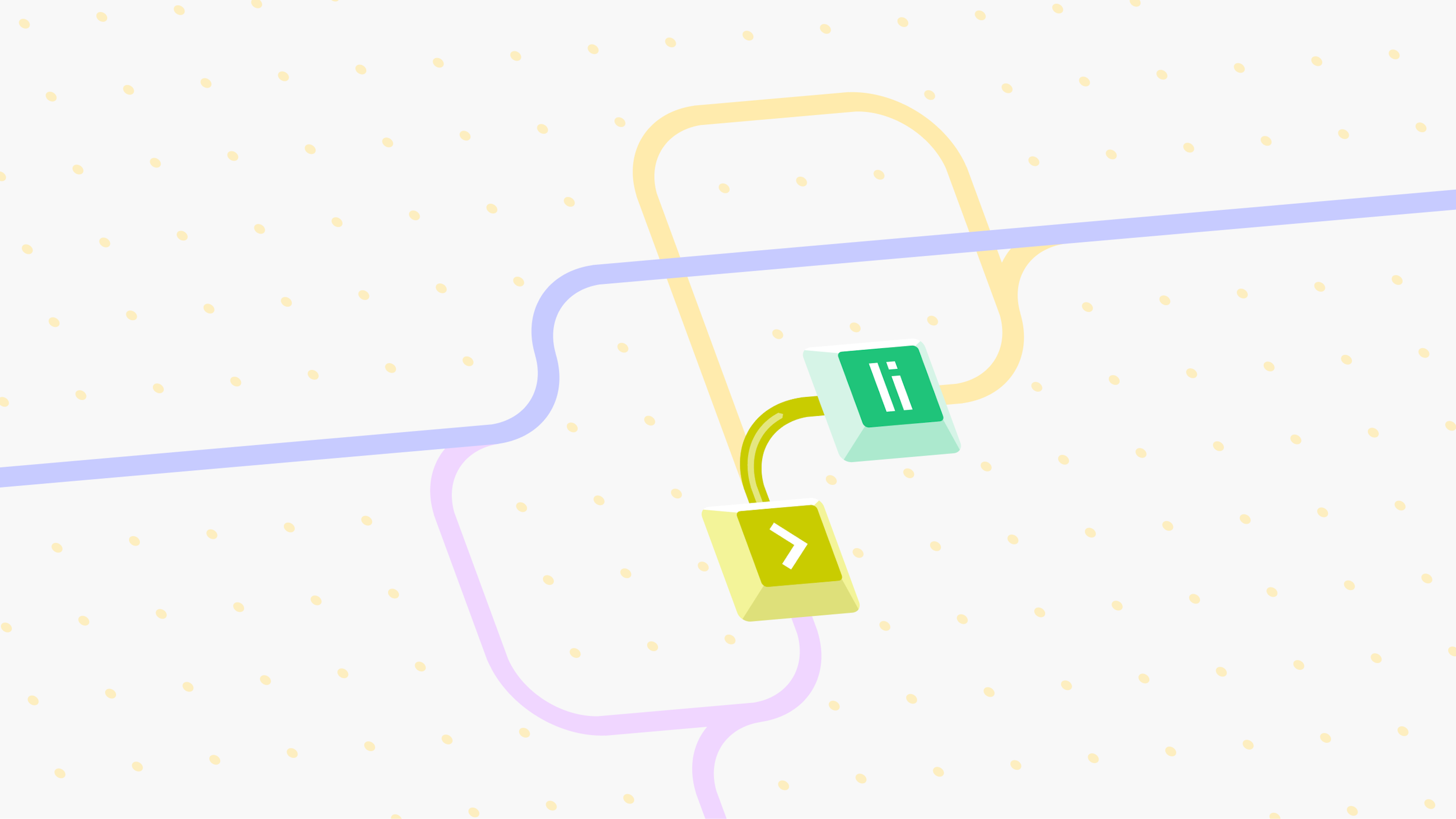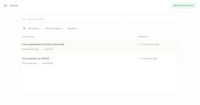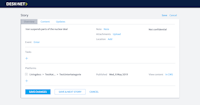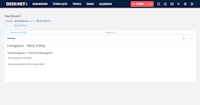partners
Kordiam & Livingdocs: How two systems seamlessly connect content planning and creation for a streamlined circuit of newsroom workflows
At Livingdocs we are focused on facilitating newsroom workflows for some of the biggest news publishing brands in the GSA market. How do we do this? By providing a robust digital content management system which supports journalists to collaborate and create and manage content with ease.
*This blog post refers to Desk-Net, which has since changed its name to Kordiam.*

Desk-Net & Livingdocs: A streamlined circuit of newsroom workflows
But we also know that content creation is not the only element necessary in order for an editorial newsroom to function efficiently and effectively. Several different (and ideally integrated) elements are needed to compose a technological structure that can support digitally-driven newsroom workflows in major news publishing houses.
This is why we actively build a strong partner network with market leaders in specific areas of newsroom tech whose services can complement our content creation and publishing system.
For example, planning content production and distribution is an essential aspect in the daily goings-on of a newsroom, and is inherently connected to the content creation process. However, if the work streams of content creation and content planning are not well integrated, this results in an unpleasant user experience with users having to switch between systems to work on a single piece of content; this can lead to significantly higher numbers of clicks and undue time spent toggling between systems – rather than creating and planning content – as well as increasing the potential of user error.
In order to better connect the stream of content planning activity to that of content creation to ensure our customers enjoy a seamless user experience, we have been collaborating for years with Desk-Net, a market leader in content planning for news publishers.
Based in Hamburg, Desk-Net has been serving publishers in Germany and Western Europe with their proprietary scalable planning system since 2011. Given our shared focus in the German-speaking market, Desk-Net approached Livingdocs in 2017 to express their interest in integration possibilities and to invite us to show our product at one of their Desk-Net Days events.
We both quickly realised that joining forces would be a pragmatic and mutually beneficial move, that in order to thrive in the dynamic world of digital media, collaboration with fellow leaders was the best way to go. And that’s how the partnership began.

But what is a partnership if two products cannot work well together? When creating partnerships with other systems, we prize easy integration capability as a key requirement.
In fact, one of the most attractive aspects of Livingdocs is that it is easily integrated into a customer’s existing ecosystem; this characteristic serves as the foundation of our strong partner network. We want to make sure we do not disrupt our customers’ workflows when we are introduced and connected with existing systems.
Moreover, when it comes to integrating with large content management systems, few tools can match Desk-Net’s integration capability. This is why our ease of integration with Desk-Net is an important competitive advantage for our clients.
Since the start of our partnership, we have shared clients a long list of clients – Süddeutsche Zeitung, CH Media, Swisscom, Der Standard, NPG, NZZ, Handelsblatt and 20 minuten to name a few – and have seen them improve their content planning and creation activities and user experience significantly thanks to our combined support.
What does the typical interaction between Desk-Net and Livingdocs look like?
A user plans topics and their distribution schedule in Desk-Net; for example, an editor can plan to publish a story about a pressing world issue at 4 PM on the international news page and then at 6 PM in the daily newsletter. This planning is essential to coordinate collaborative efforts and keep workflows cleanly defined. It is through the integration with Livingdocs that the user is able to execute this planning: When it comes to planning and executing tasks, you plan a story and create a task in Desk-Net, and then this status change is reflected directly in Livingdocs, and users can go straight into the process of article creation without having to switch systems. In fact, when it comes to status updates, there is a way to have both uni- and bidirectional synchronisation between the two systems. For example, in the latter case, if an editor creates a story in Desk-Net, the respective article is automatically created in the Livindocs editor, as well. And if the author of that article decides to change the title of that article, for example, this change is reflected immediately in Desk-Net, too. To note everything already filled in via Desk-Net – like author name and keywords – is synched to metadata of the article being created in Livingdocs, saving time and significantly reducing clicks.
Desk-Net & Livingdocs
Synchronised and Integrated
The other half of the integration capability lies in aligning content with the desired distribution channels (e.g. newsletter, digital edition, topic pages) so users can see what goes where and when. Several customers in our portfolio currently benefit from optimised distribution workflows thanks to the combined power of Desk-Net and Livingdocs.
For example, CH Media – one of the leading Swiss media companies producing high quality news content for dailies, weeklies and magazines – uses Livingdocs and Desk-Net to support their combination of print and web-based workflows. Users plan the print and web content and set the relevant metadata in Desk-Net. This information is sent to Livingdocs where the previously entered data is used to create a web article and, from that, a print article, which is then sent to the print system. All of this goes on seamlessly without the user having to leave the system they are in.
Particularly crucial for news publishers focused on print, users can define in Desk-Net the length of an article for the print edition, allowing the editor to craft a text in Livingdocs accordingly. Therefore, even if a news publisher is not pursuing a purely digital strategy, the combination of Desk-Net and Livingdocs can still help optimise parallel workflows.

Another interesting use case of Desk-Net and Livingdocs in combination is seen at Süddeutsche Zeitung (SZ), albeit in two special cases. The first SZ case is one where users can see the planning data for a page clearly through a very deep integration into Livingdocs. Fields can be synchronised via automation and page and article statuses are synched and communicated back through Desk-Net. Mapping offers are also automated. For example, a user can be mapped to a task (e.g. to write a text), and then can be mapped by name and connected to Livingdocs. Parameters providing word count are also mapped. Data in Desk-Net is restructured to be clearly and coherently shown in the event of changes. This all allows for a crystal clear and coordinated overview of the topic planning and the content as it is being created. Moreover, a user can see all of the content planned in Desk-Net for the day in the sidebar, and either can drag and drop elements into a page directly, or use the info in the metadata (like a planned publication date) to make the article part of a list and automatically generate a certain part of a page accordingly. Indeed, SZ relies on Desk-Net as the central dashboard for planning and managing all of its digital content. If a topic is not in Desk-Net it will not be published. Desk-Net maintains a treasure trove of metadata for each piece of content, including the date of publication, format and target platforms.
The second special use case is SZ’s digital edition, known as the Digitale Ausgabe, a premium finite product. In order to liberate resources and simplify the e-edition’s production process, SZ has developed a novel workflow that leverages Desk-Net metadata to automatically pre-produce 80% of the Digitale Ausgabe. So as journalists meticulously plan all of their content within Desk-Net, Desk-Net metadata seamlessly generates 80% of the e-edition, allowing journalists to focus on reviewing and refining the e-edition as needed in the Livingdocs CMS, which is seamlessly integrated. SZ views this new workflow as a revolutionary step that will play a pivotal role in enhancing the Digitale Ausgabe in the years to come, and open up the possibility to pre-produce other products in the future, such as newsletters and print editions, all while fostering transparency, collaboration, and a sense of ownership among SZ journalists.
Check out the Desk-Net + Livingdocs integration for the Digitale Ausgabe below, as demonstrated by Süddeutsche Zeitung's Senior Editor for Digital Strategy and Innovation, Hannes Vollmuth, during our first Spotlight Event.
When reporting the news, editors don’t want to be slowed down and frustrated by a friction-filled user experience, where they have to jump between systems to complete a task or enter the same data twice in two different places. That’s why smooth integration between systems is essential for streamlined newsroom workflows.
The partnership between Desk-Net and Livingdocs is a perfect example of how two systems can work together to create the best possible experience for their users. It’s a tried and true collaboration resulting in major benefits for customers, namely less clicks and more time for focusing on what really matters: creating world-class journalistic content.


